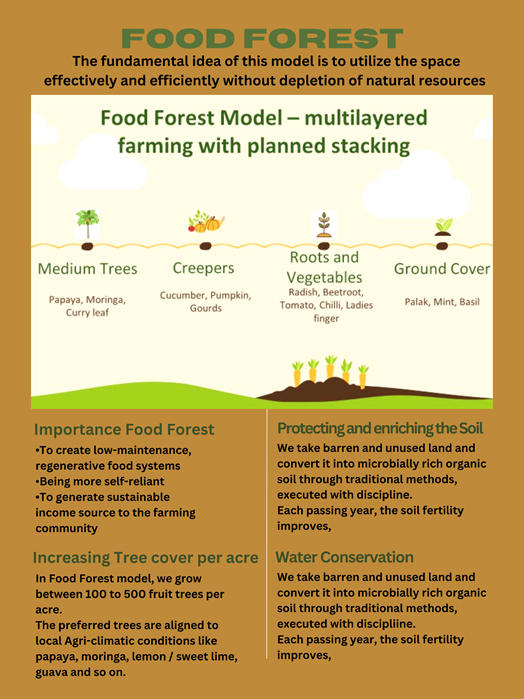Advantages & Benefits Of Food Forest Model
Our “Food-Forest” model combines knowledge of traditional natural farming with technology and operational processes. A food forest is a food production strategy in a small space by mimicking the natural forest ecosystem.
A food forest is a method of agroforestry system which is relatively cost-effective, maintenance-free, and regenerative in nature. Incorporating fruit and nut trees, shrubs, herbs, vines and perennial vegetables which have yields directly useful to humans.
Making use of companion planting, these can be intermixed to grow in a succession of layers to build a woodland habitat.
Food forests are like the ultimate organic garden. Does a forest need tilling, weeding, fertiliser, or irrigation? Nope. And that’s the goal. Because they’re mostly perennial crops, there’s no need to till.
Not tilling preserves the natural soil structure, preventing the loss of topsoil and allowing all the little microbes and soil critters to do their jobs, cycling nutrients and maintaining fertility.
The deep roots of trees and shrubs make them much more drought tolerant than annual vegetables, and they shade the smaller plants below, keeping everything lush and moist in a self maintaining in other words, a highly sustainable system.

